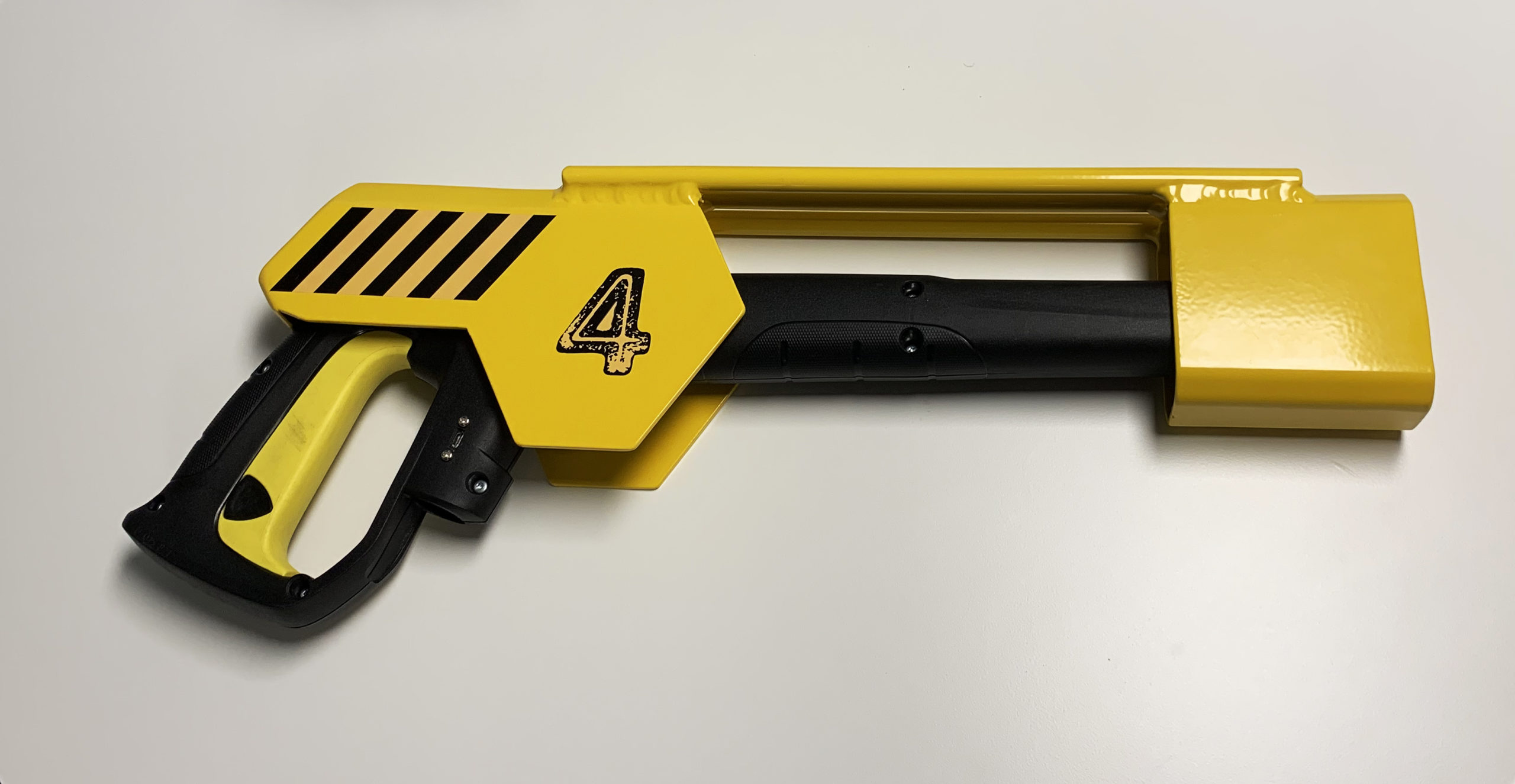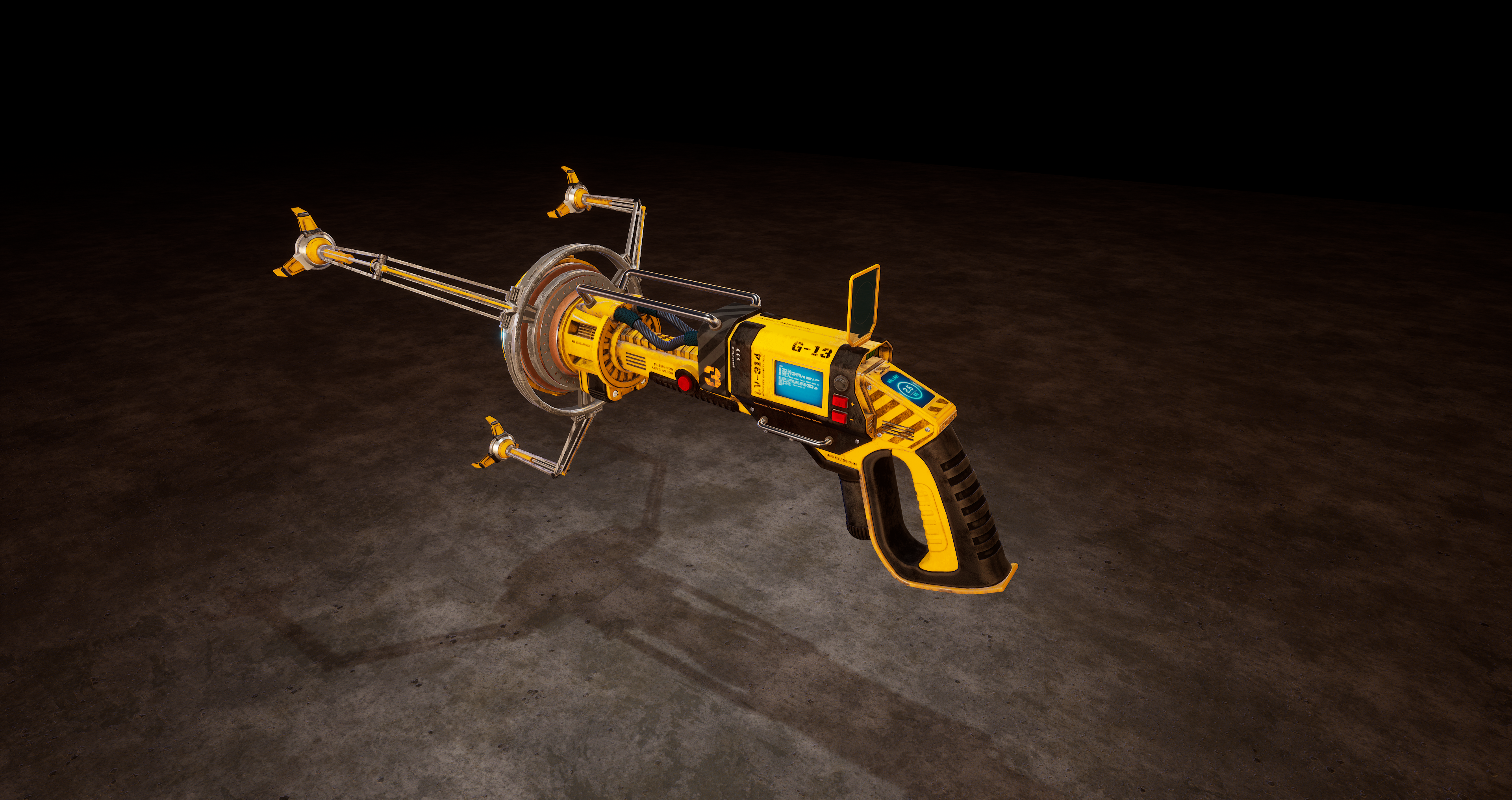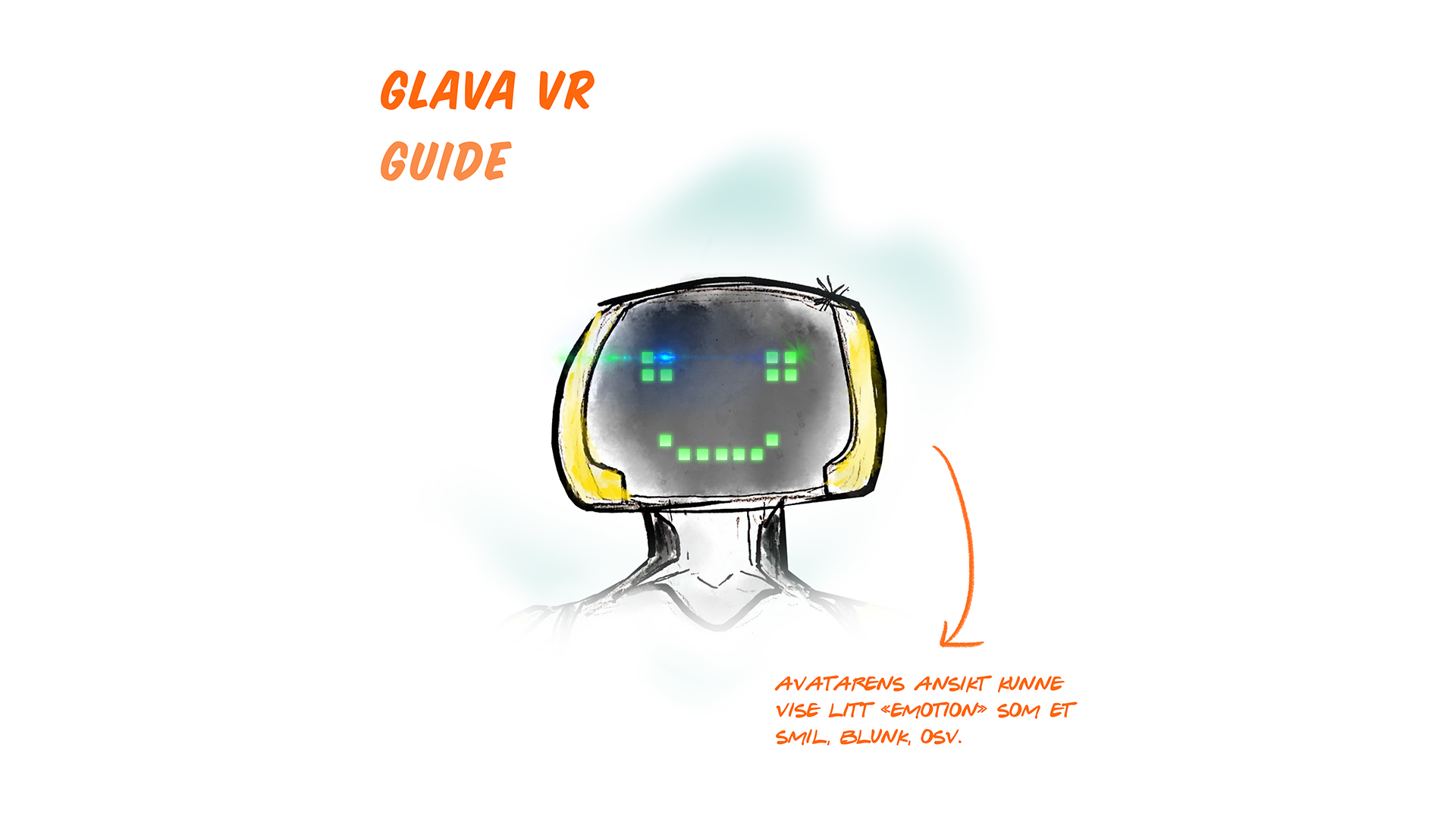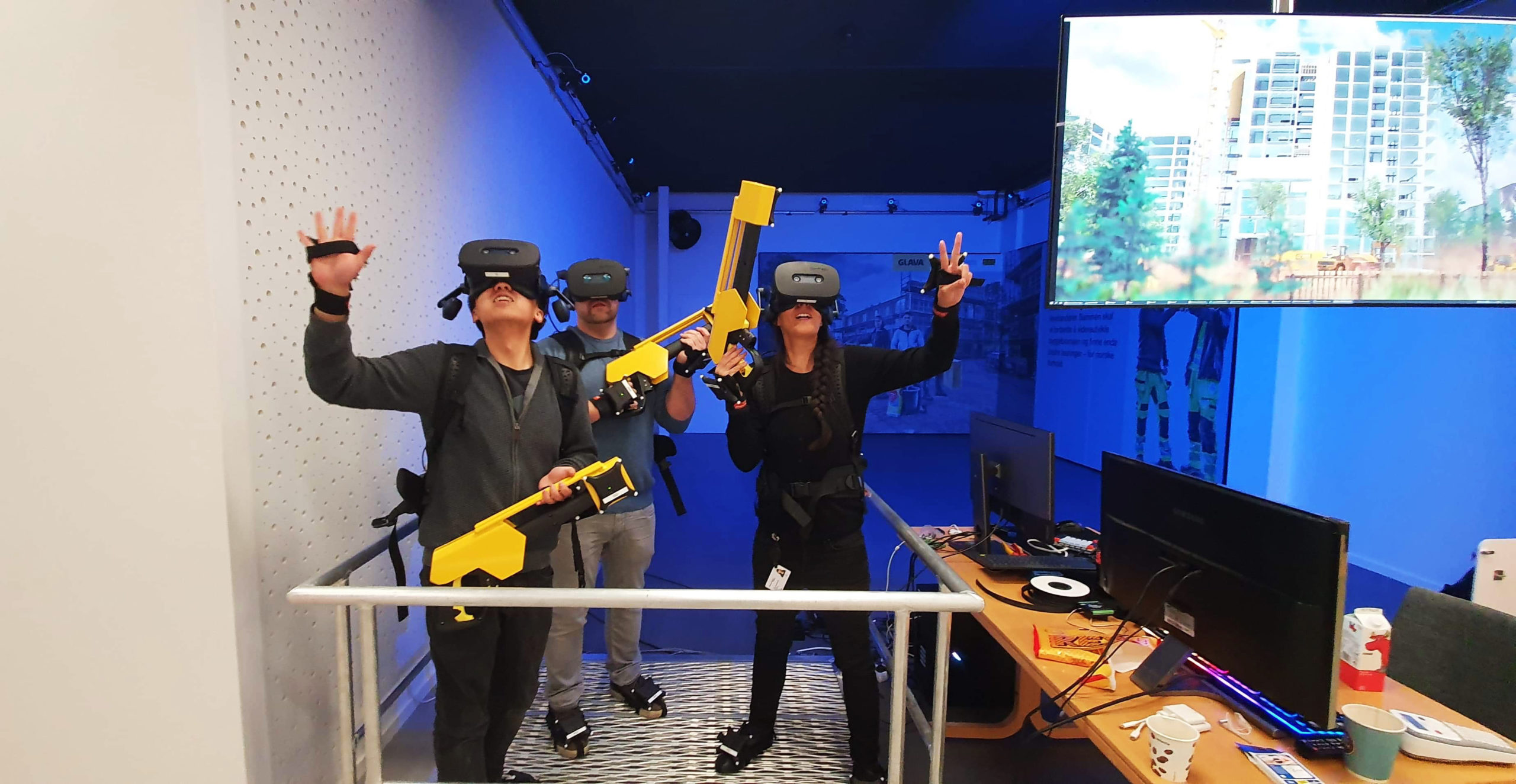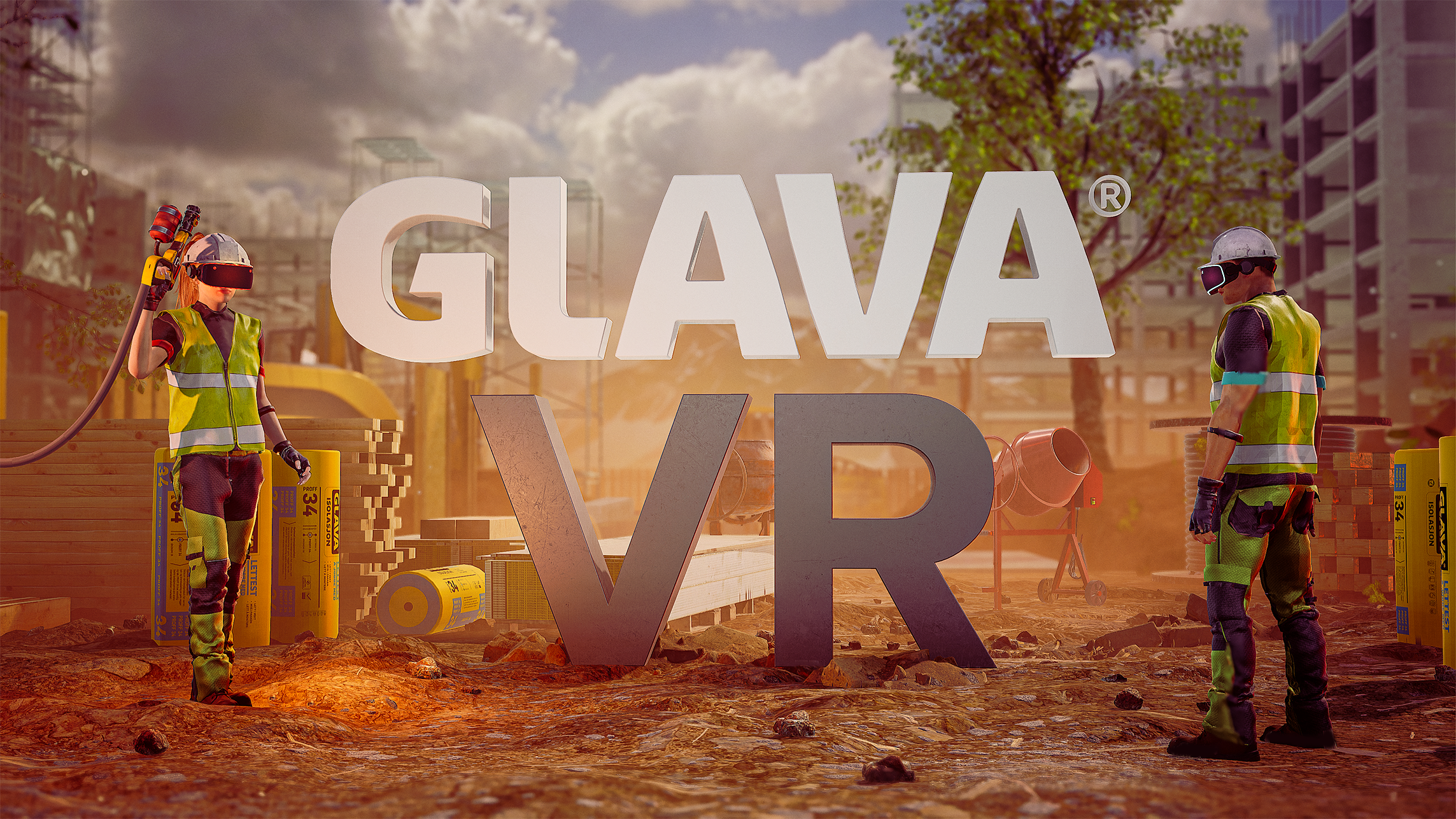
GLAVA VR | 2019
A location-based multi-player virtual reality experience made exclusively for Glava/Glavatech in Askim, Norway. Four players go through different tasks and challenges in a construction site. They navigate through the construction site via a real-life shaking platform, appearing as an industrial elevator in virtual reality.
There is a robot guide assiting throughout the game, and players can manipulate physical tools that change form and function in VR. A custom-made soundscape and tactile, physical effects complete this immersive experience.
I contributed with the development of the user-experience, testing and concept development for each of the tasks and challenges. I worked with the concept design of the robot guide and storyboards for the game. Paper prototyping (in 1:1 scale) was an important part of the design process considering that Glava VR is a roam-free experience. I also worked with some 3D assets and basic textures for the game (mostly the roof-top game).
Acknowledgements
Developed by Logic Interactive.
Client: Glava AS.
My role: user-experience designer, concept developer.
This location-based virtual reality experience was developed in Unreal Engine 4, and used an Optitrack tracking system.
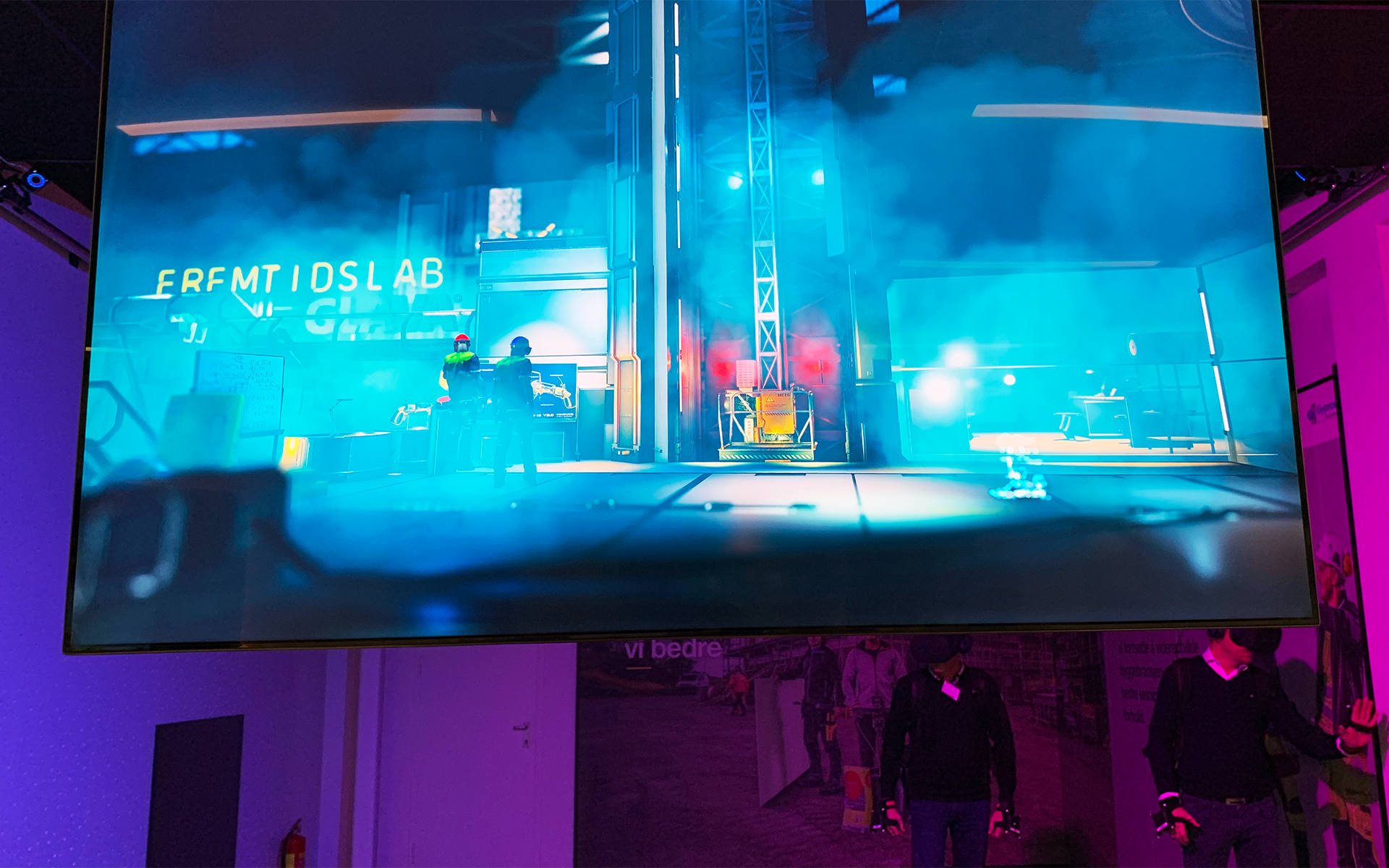

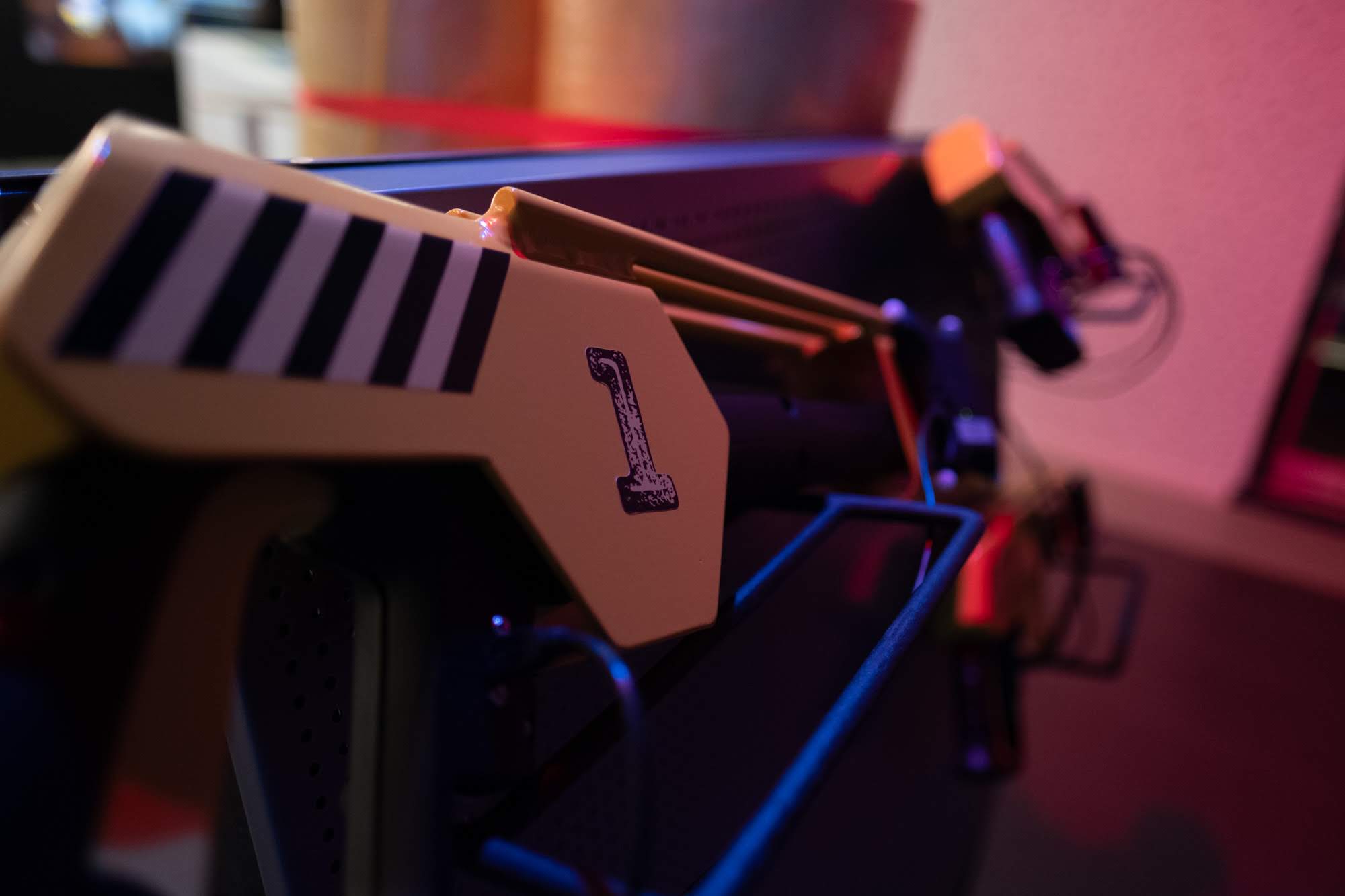
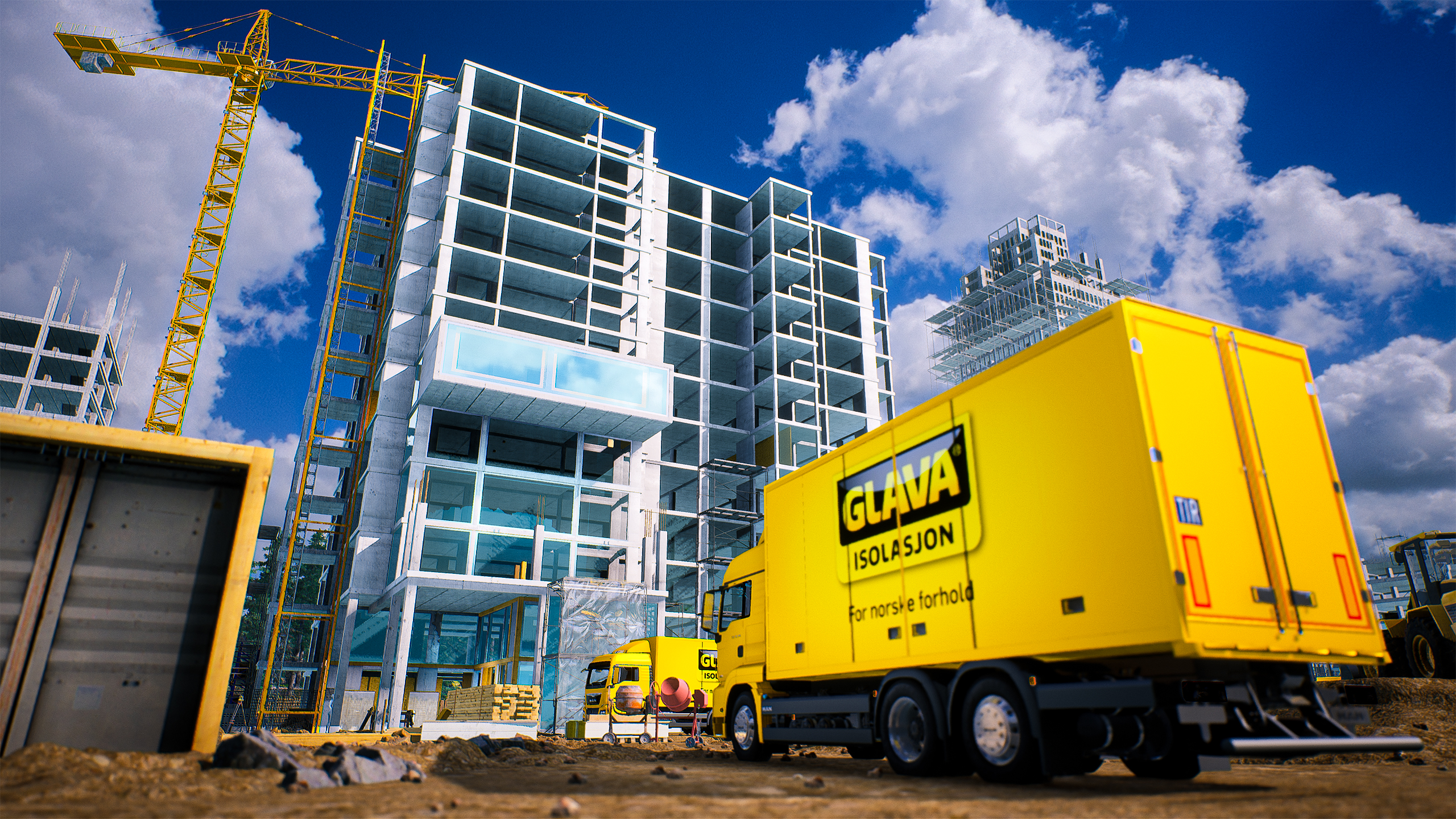
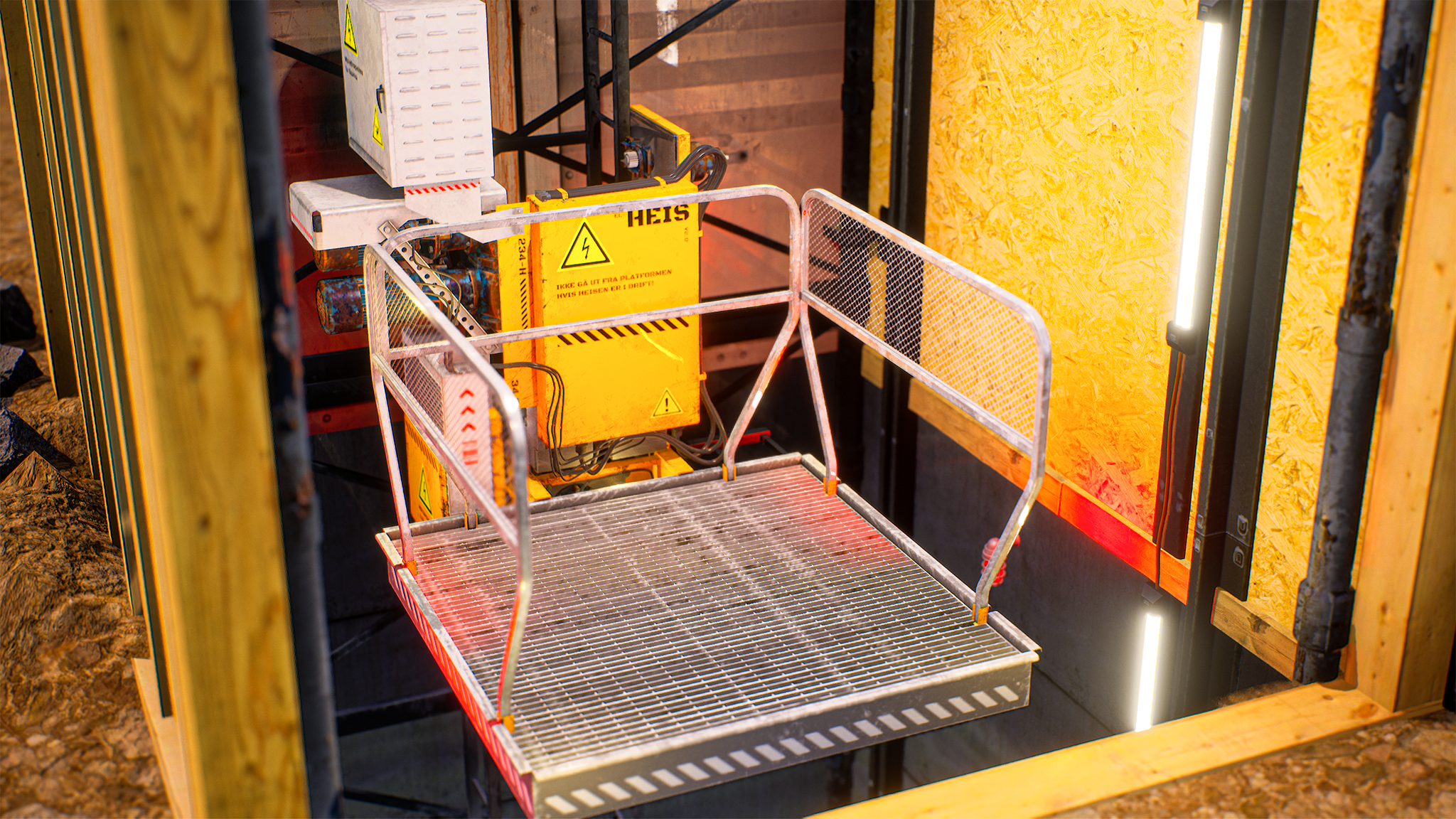
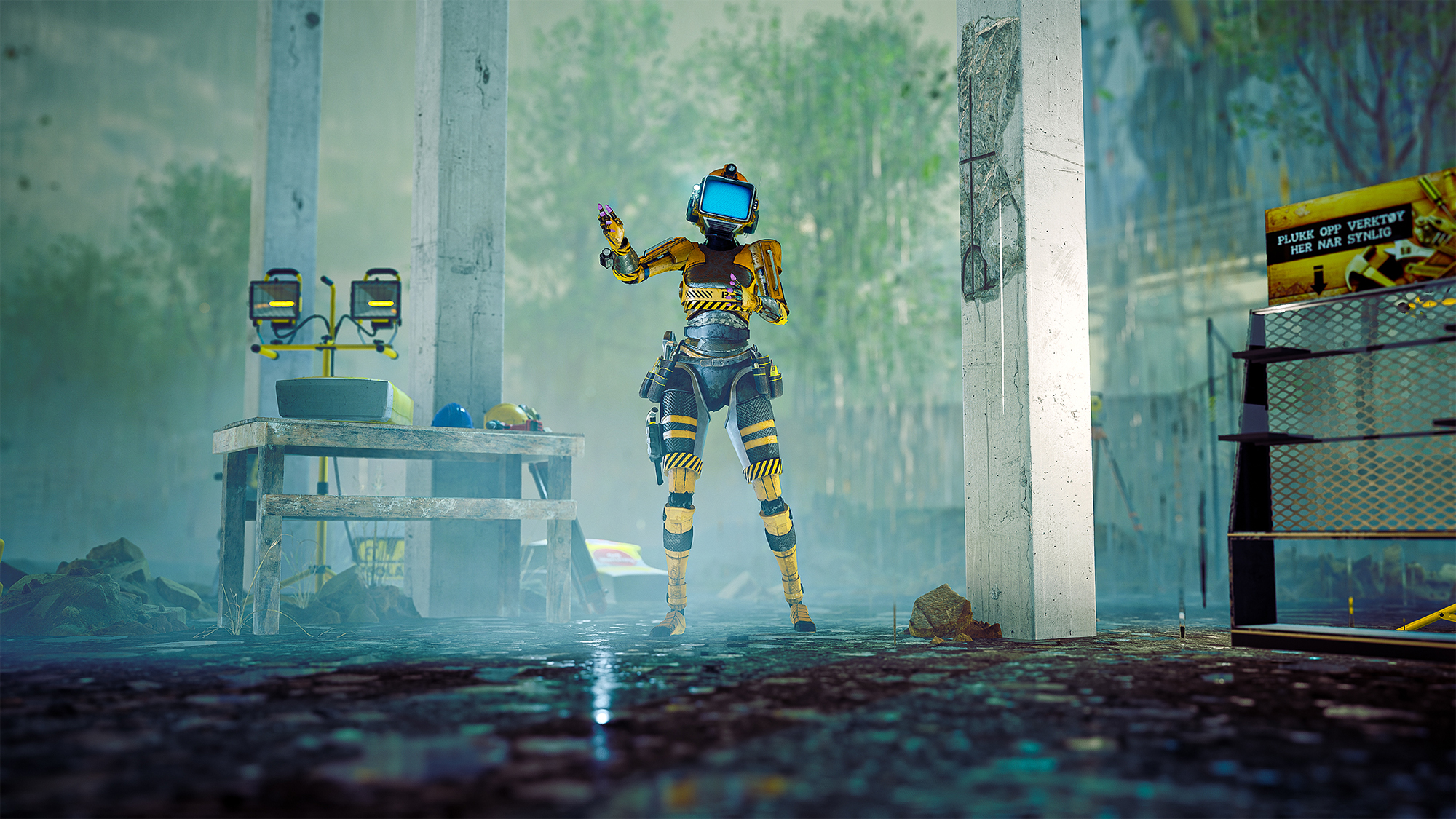
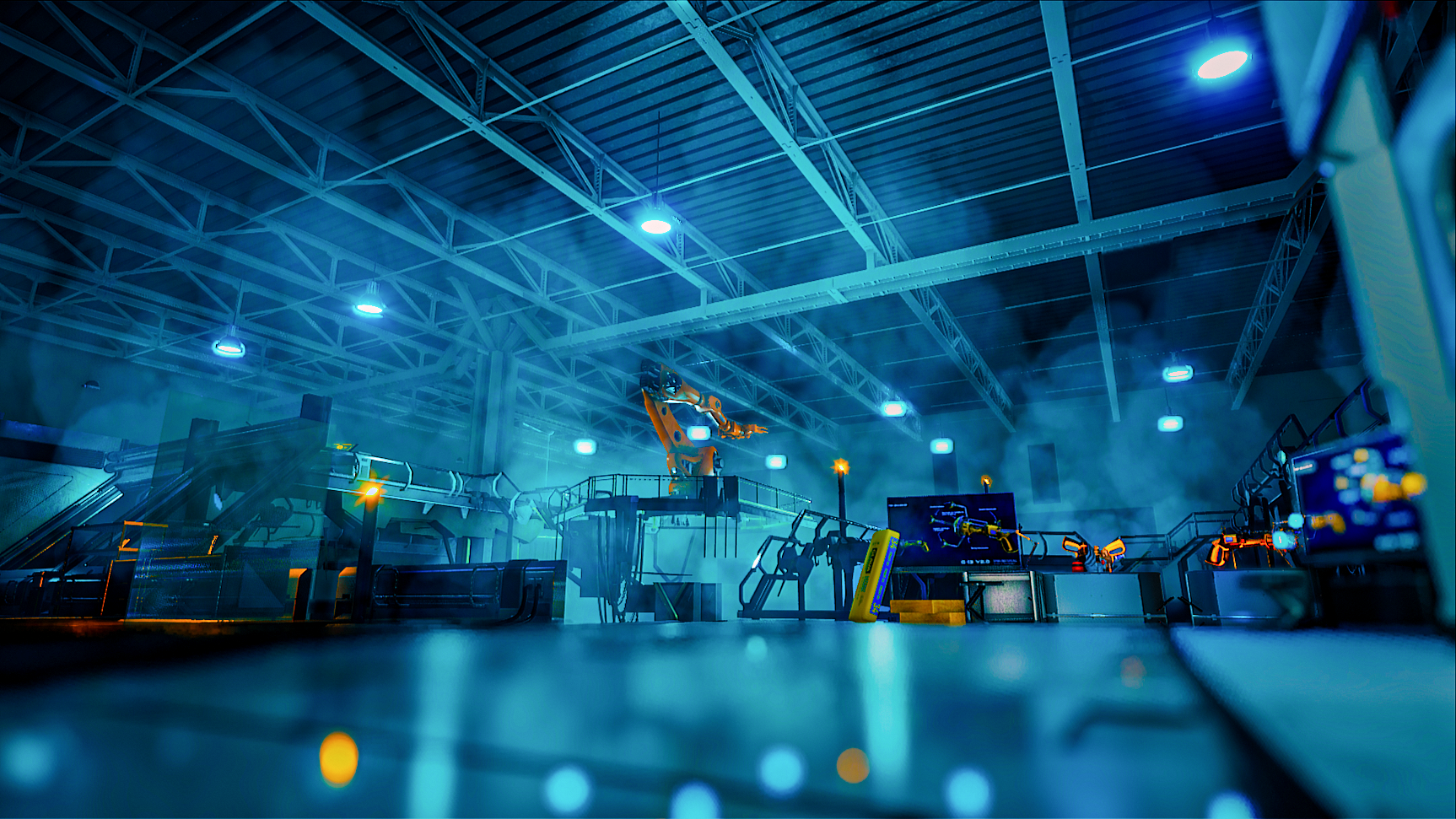
The team also delivered interactive installations for the Glava education center: an interactive welcome screen and an interactive in-depth info station (in which visitors can “magically” swipe content from the main table towards the main screen on the wall):
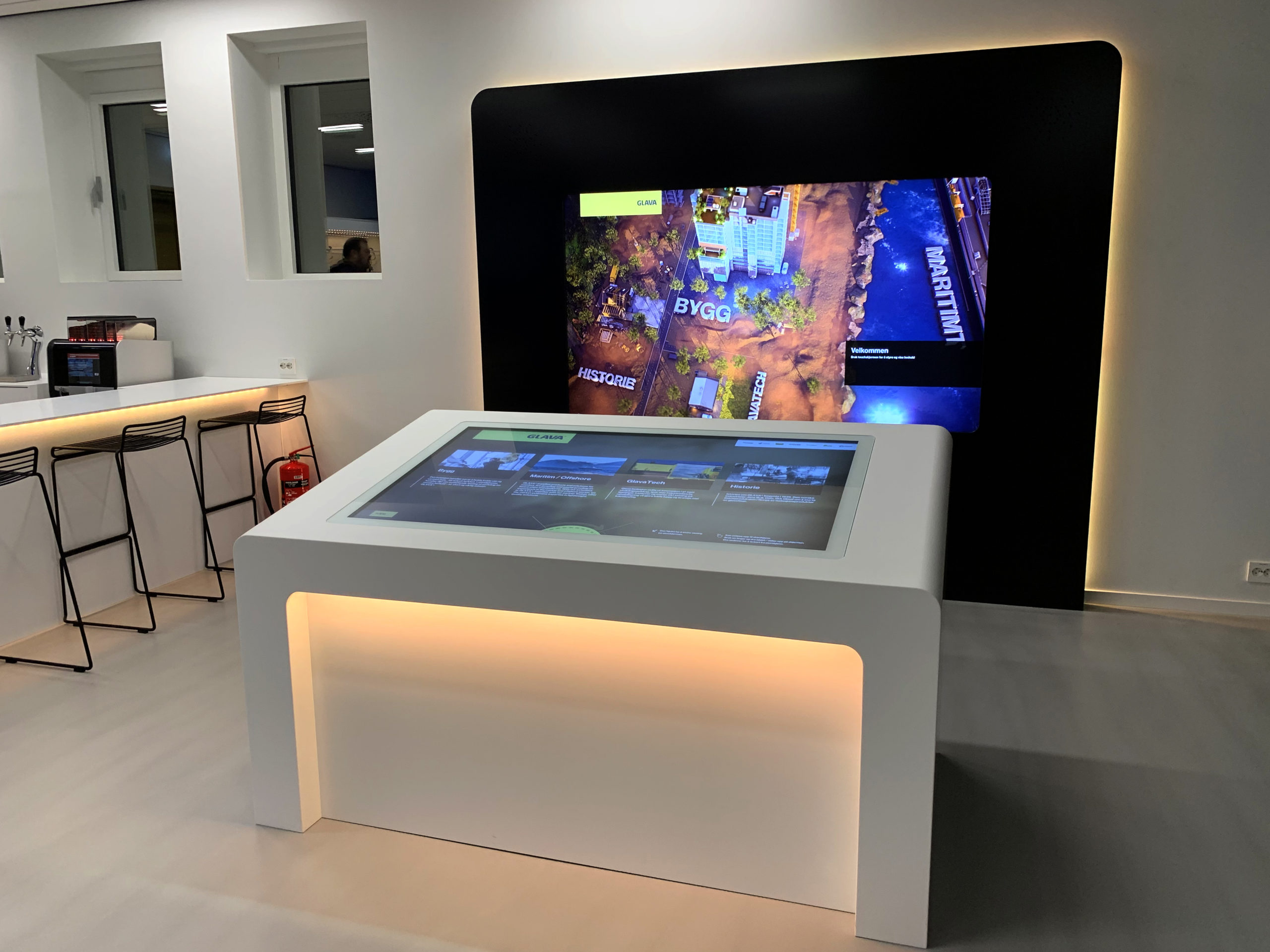
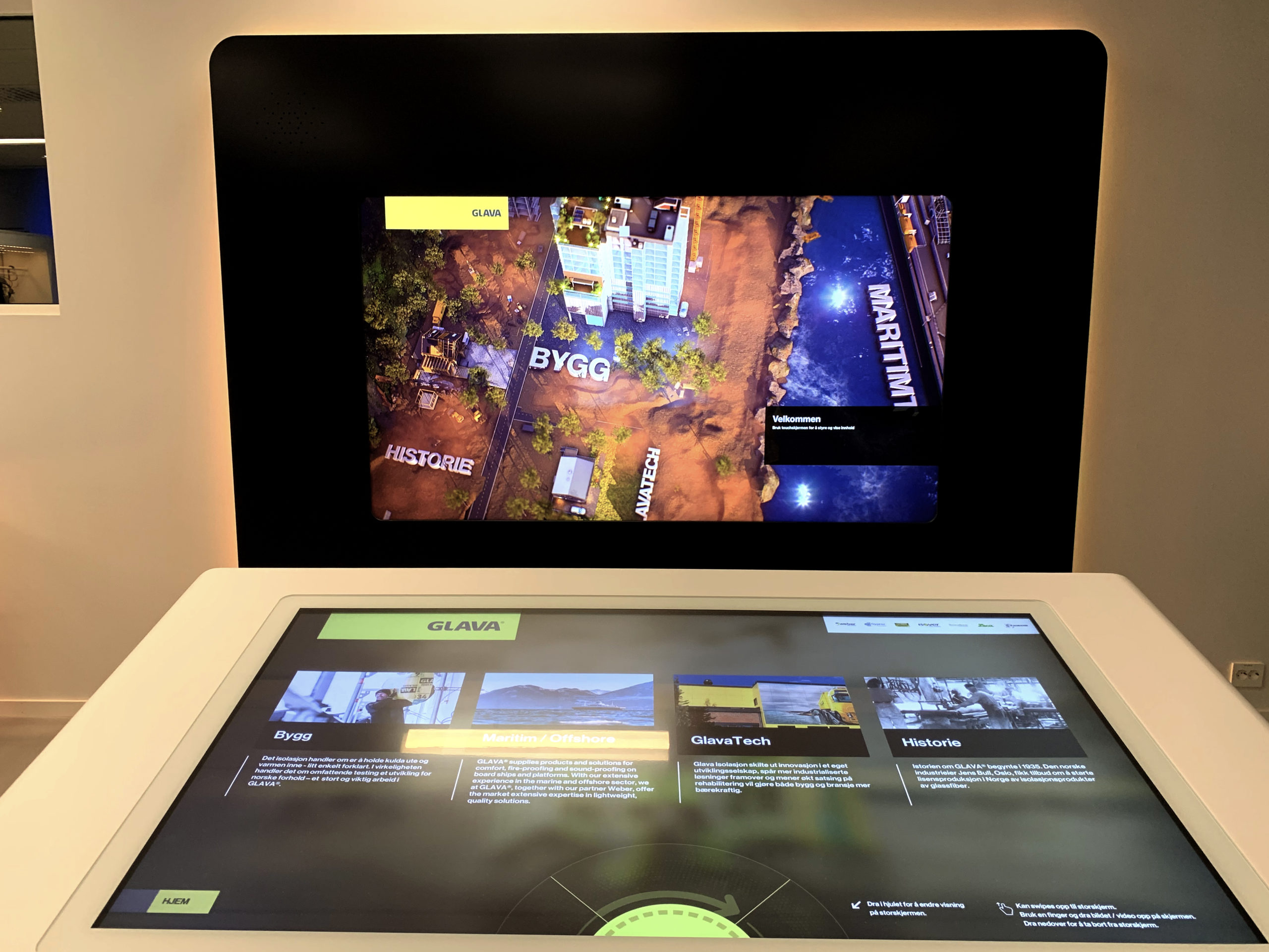
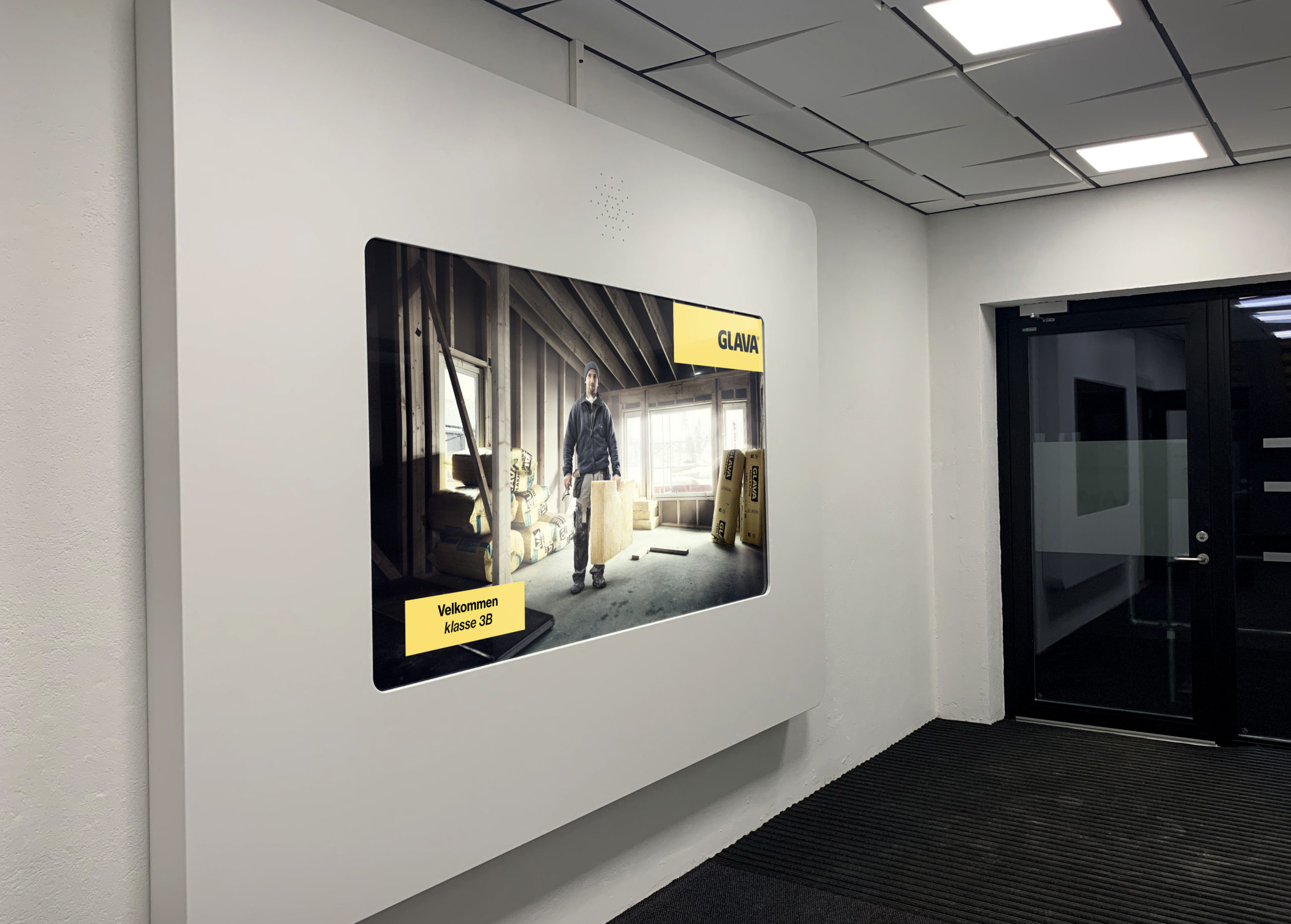
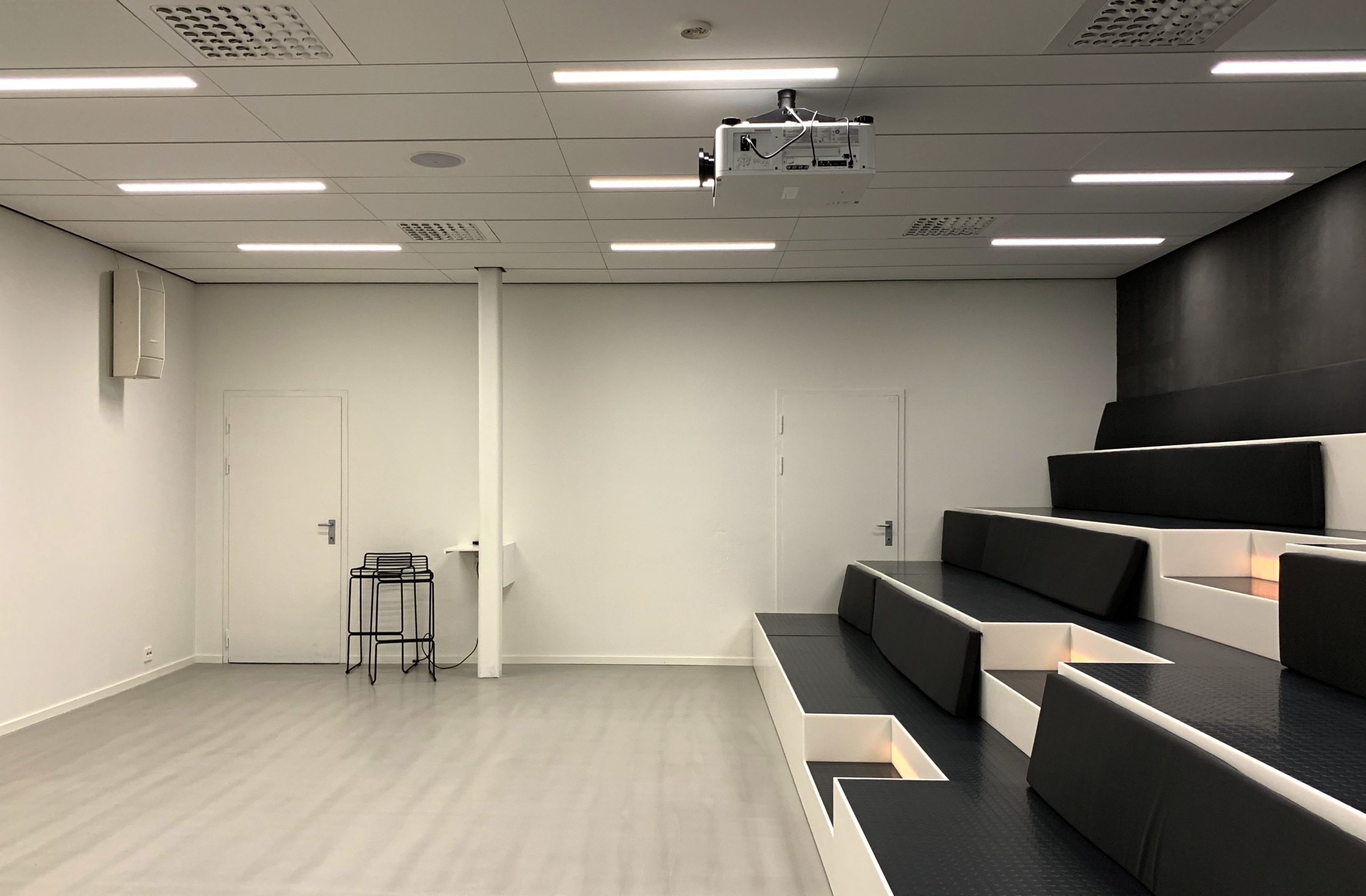
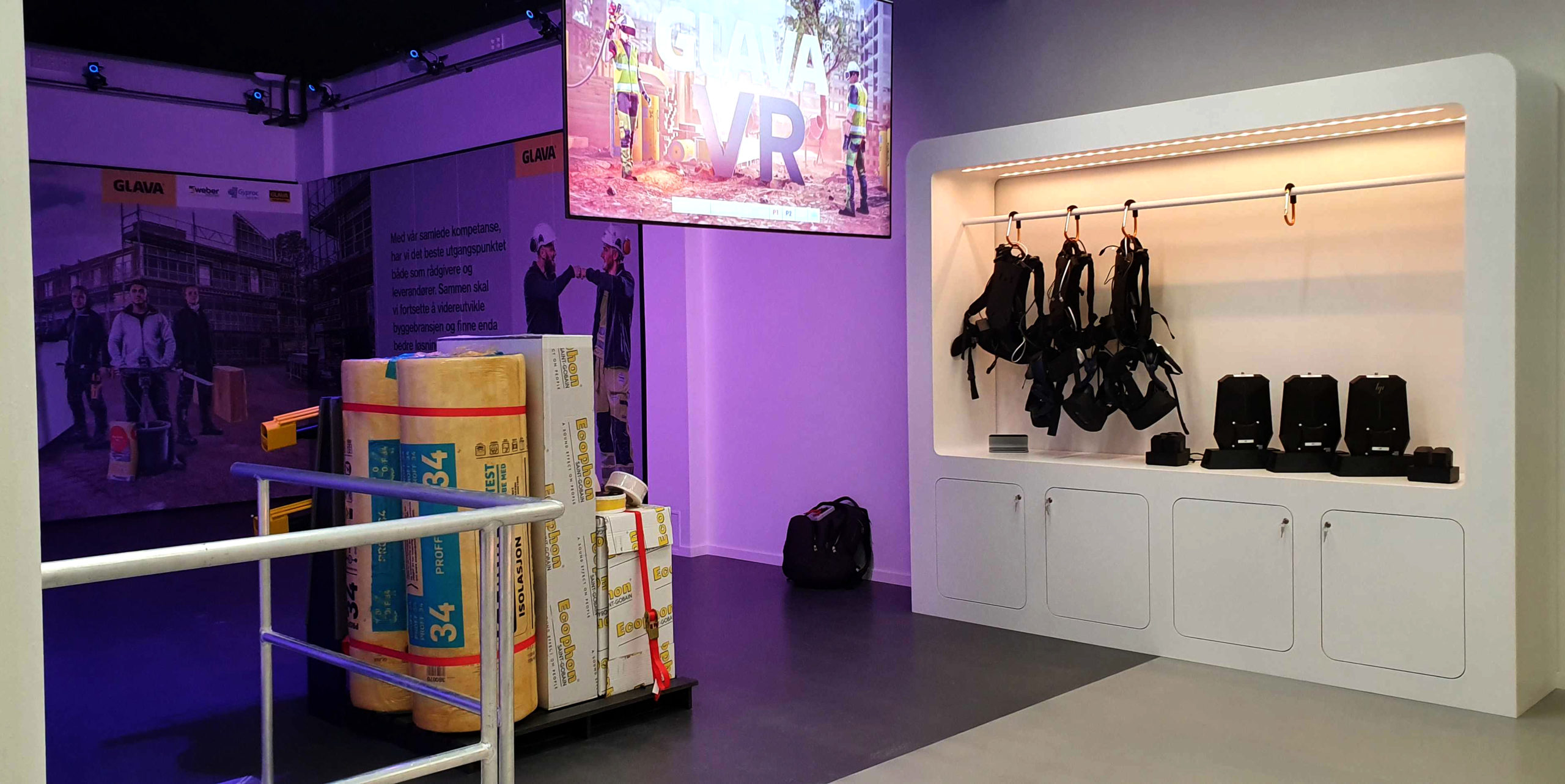
One of the tasks in the VR experience is to isolate the building’s roof. In reality, workers need to cut the isolation plates on-site so that they fit all corners and surfaces, in addition to having its thickness go from thick to thin, creating a ramp (for rain etc.) Setting up a roof like this seems like a puzzle, and thus we ideated a challenge where players would isolate each their own zone on a roof by placing puzzle pieces in the correct place. Since this is VR, we added an element of fun by using a tool to manipulate the pieces: an anti-gravity gun. This solved the issue of both manipulating something virtual and using the real room effectively.
Here’s a break-down of some of the work I did for this part of the project: a storyboard sketching out the main scene, paper prototyping in 1:1 scale, making the puzzle pieces in 3D and making the plate texture. The last images in the sequence show the final scene in-game.
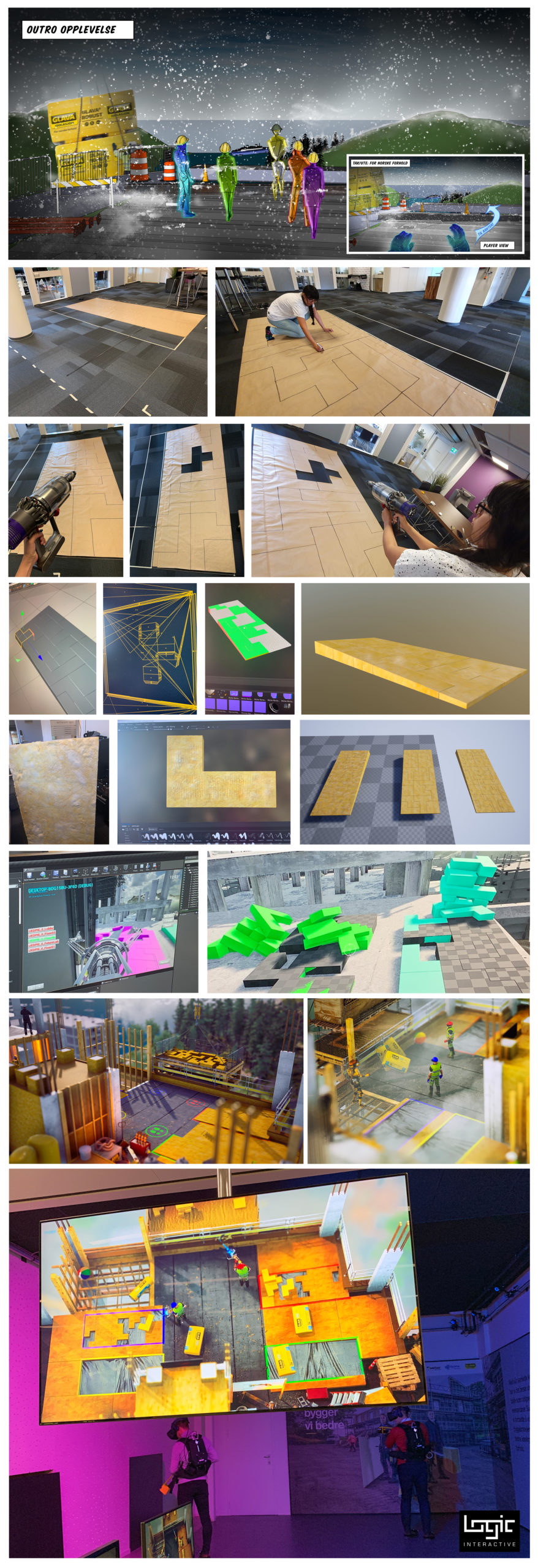
Comparison between the storyboard of a task/challenge in one of the levels and the final scene.
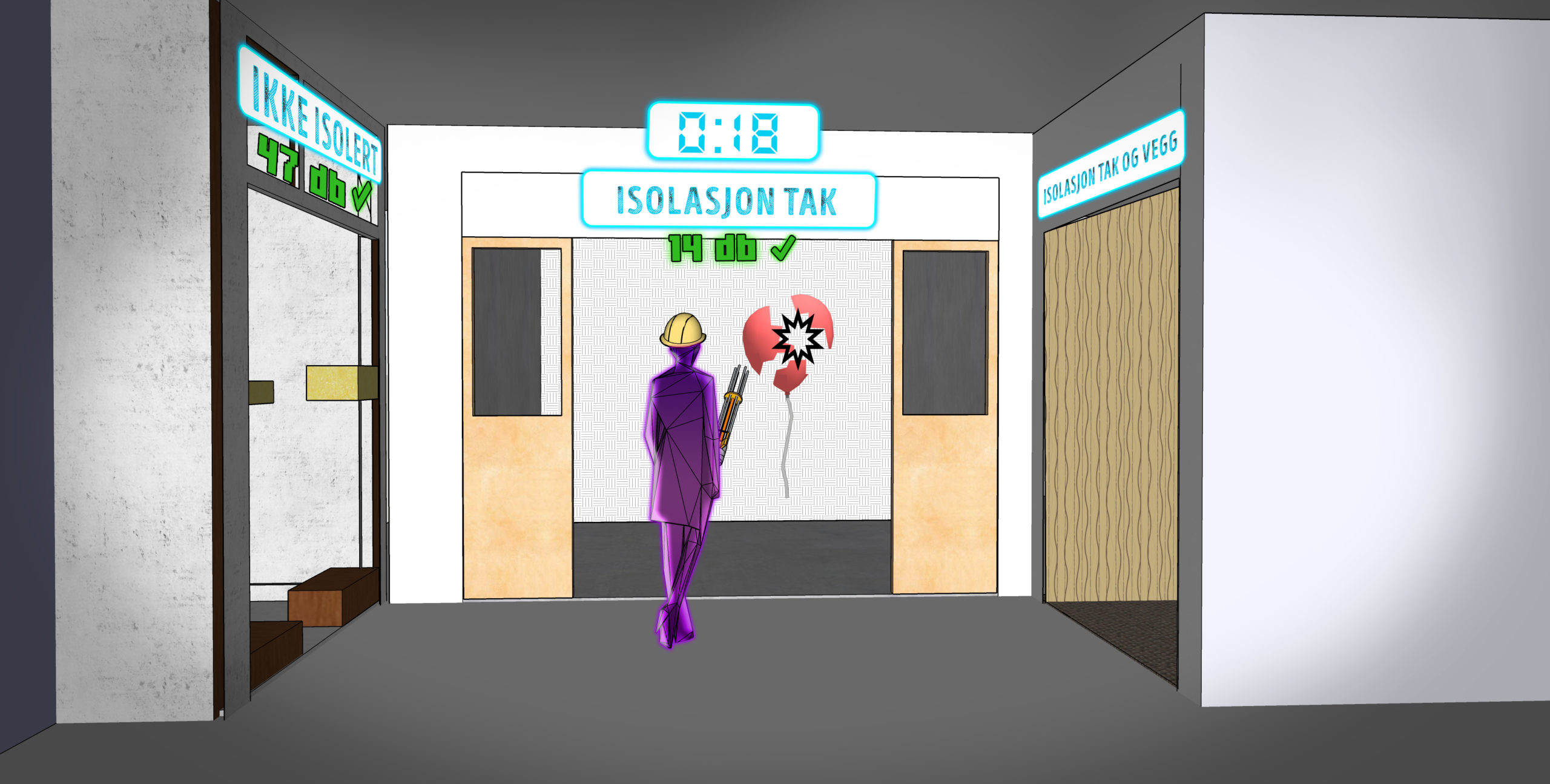
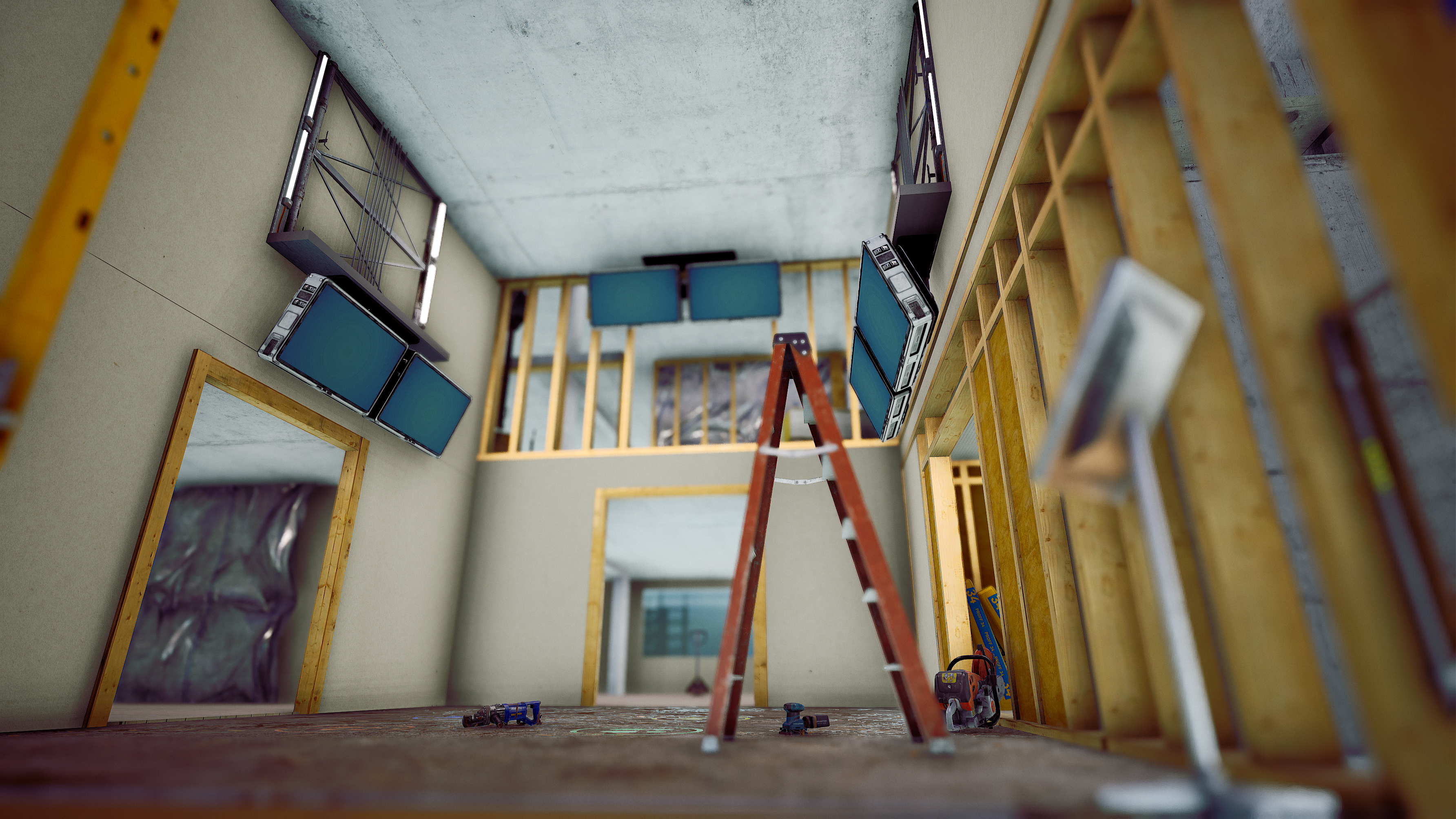
Storyboards of different scenes in the VR experience:
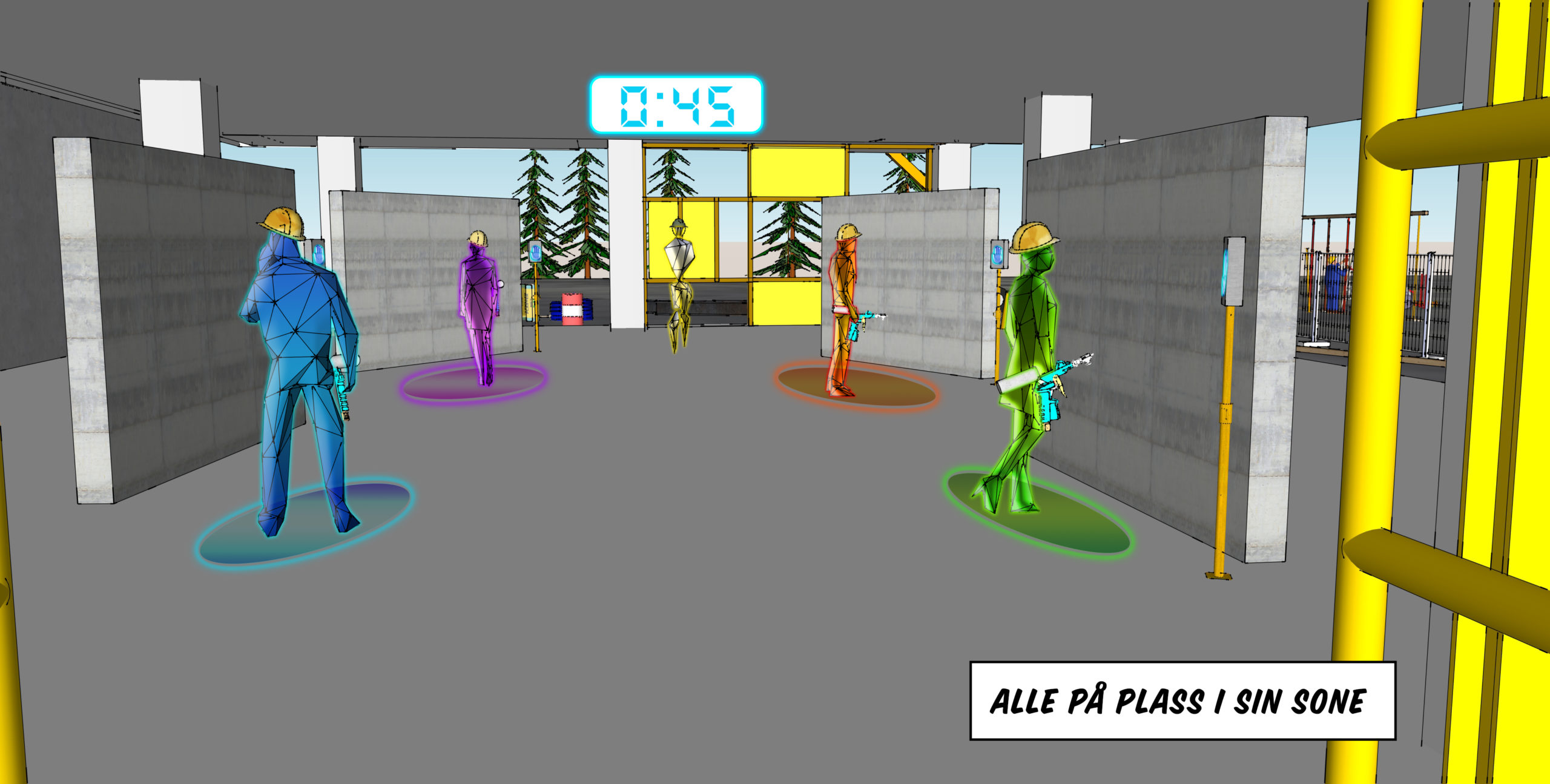
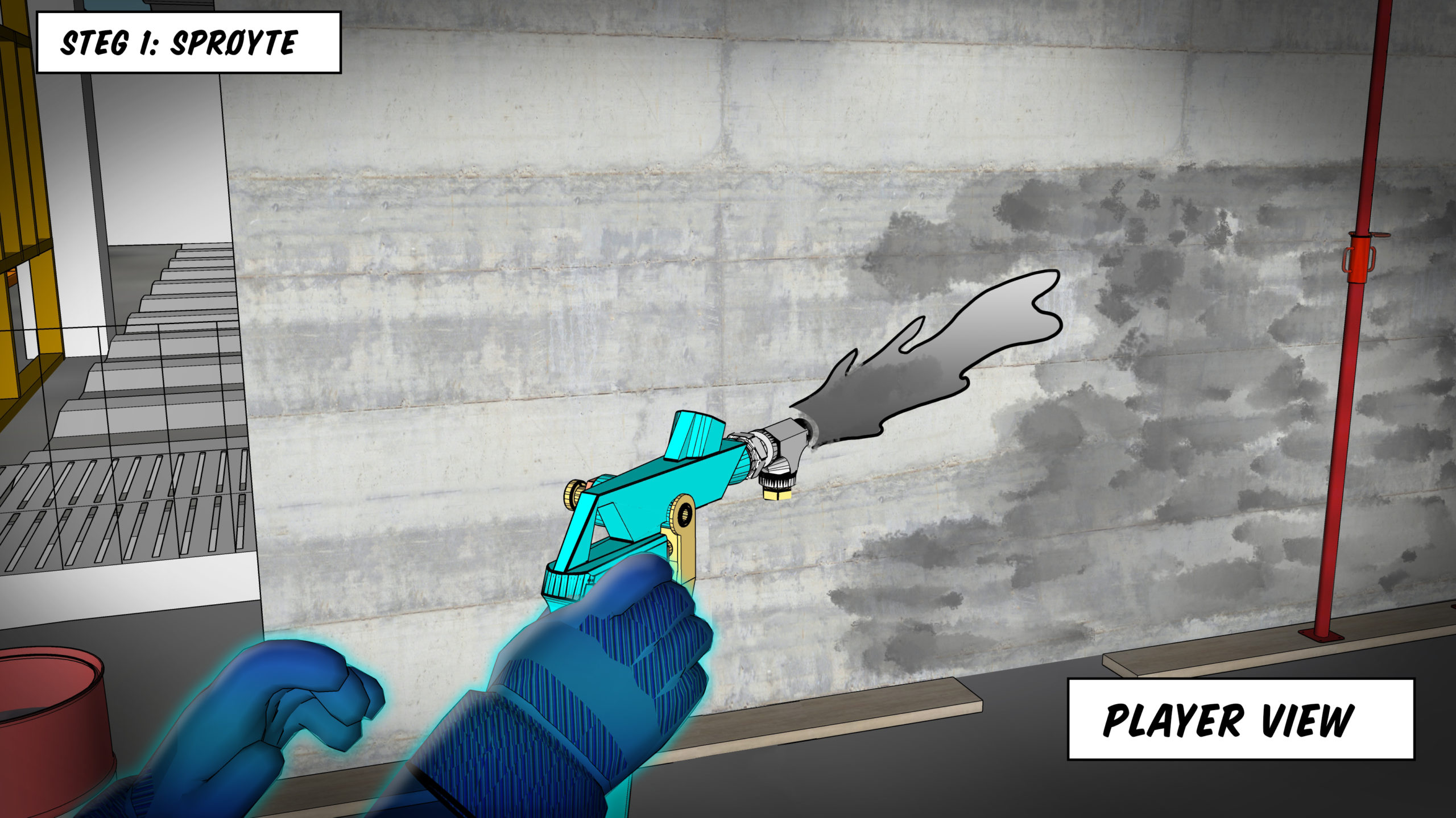
The tool/prop in real life and in virtual reality (as an anti-gravity gun).
Concept sketch for the robot guide.

